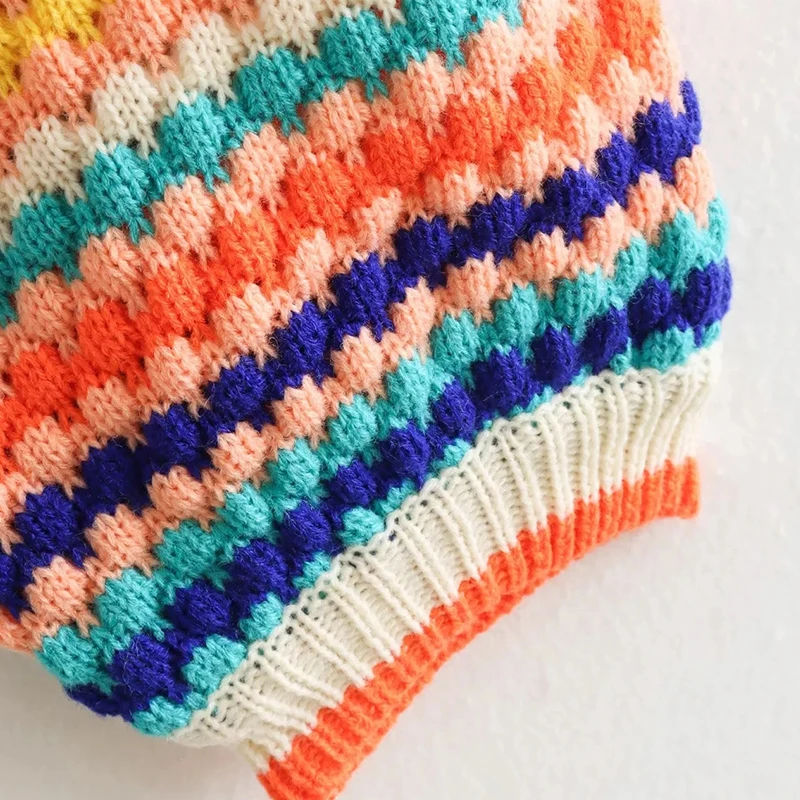Understanding Why Cashmere Shrinks: The Science Behind the Delicacy
Cashmere is one of the most luxurious natural fibers in the world, harvested from the soft undercoat of cashmere goats. What makes this fiber so special is its incredible fineness—premium Grade A cashmere features fibers under 16 microns in thickness and exceeding 36mm in length. This exceptional quality creates the incomparably soft, lightweight warmth that cashmere lovers cherish.
But this delicacy comes with vulnerability. Cashmere shrinks due to its protein-based structure, which is similar to human hair. When exposed to three specific conditions—heat, agitation, and alkaline substances—the microscopic scales that make up each cashmere fiber undergo a dramatic change:
- The scales lift and then lock together when agitated
- Heat accelerates this process, causing fibers to contract
- Alkaline conditions (found in many regular detergents) break down the fiber’s natural structure
When you look at cashmere under a microscope before and after improper washing, the difference is striking. The once smooth, aligned fibers become compressed and tangled, reducing the garment’s size while increasing its density. This transformation begins at temperatures above 85°F (30°C)—much lower than most people expect.
Understanding the comprehensive cashmere care and washing process is critical before you attempt to clean your precious garments. The knowledge of what’s actually happening to the fibers will help you appreciate why each careful step matters.
Identifying Quality Cashmere: What You’re Protecting
Before discussing cleaning methods, it’s important to understand what makes your cashmere worth protecting. High-quality cashmere stands apart from mass-produced varieties in several noticeable ways:
- Exceptional softness that improves over time with proper care
- Lightweight yet remarkably warm construction
- Minimal pilling when properly maintained
- A subtle, natural luster rather than an artificial shine
The difference between Grade A cashmere and lower-quality versions is substantial—not just in feel but in longevity. Premium cashmere properly cared for can last decades rather than seasons, making the price difference an investment rather than an expense.
When you understand that properly maintained cashmere can retain its beauty for years, the care instructions that follow become less about maintenance chores and more about protecting a valuable asset. Learning how to address cashmere pilling issues becomes an essential skill for maintaining your garment’s appearance.
Essential Preparation: Before You Start Washing
Proper preparation is crucial for successful cashmere cleaning. Follow these steps before you begin the actual washing process:
Check the care label first: Always default to the manufacturer’s instructions, as some cashmere blends may have special requirements.
Gather the right supplies:
– pH-neutral, wool-specific detergent (brands like Woolite, Eucalan, or The Laundress Wool & Cashmere Shampoo)
– Baby shampoo can work as an alternative in a pinch
– Clean basin or sink (free from any residues)
– Clean white towels (colored towels may transfer dye)
– Mesh laundry bag if considering machine washingPre-treat any stains: Address spots before washing the entire garment. For oil-based stains, a tiny amount of dish soap can work wonders, while most water-based stains respond well to a dab of wool detergent gently worked in.
Turn garments inside-out: This protects the visible surface from friction damage during cleaning.
Never use standard laundry detergents, bleach, or stain removers on cashmere—these contain alkaline substances and enzymes that attack the protein fibers. Even “gentle” versions of regular detergents can cause damage.
Once you’ve prepared properly, you’ll be ready to begin the actual washing process. Becoming familiar with techniques for washing cashmere at home will help you maintain your garments with confidence.
Hand Washing Cashmere: The Safest Method
Hand washing is unquestionably the safest approach for cleaning cashmere. This method gives you complete control over every aspect of the cleaning process, from water temperature to the amount of agitation.
Follow these steps for perfect results:
Fill a clean basin with cool water: The temperature should be between 65-75°F (18-24°C)—cool to the touch but not ice cold. Never use warm or hot water.
Add detergent: Mix in a small amount (about 1 teaspoon) of wool-specific detergent until it dissolves completely. The water should look only slightly soapy, not bubbly.
Submerge your cashmere: Gently place the garment in the water, ensuring it’s fully submerged. Press down gently to allow the water to penetrate the fibers.
Allow to soak: Let the cashmere rest in the solution for 5-10 minutes. This gives the detergent time to lift dirt and oils without aggressive agitation.
Clean with minimal agitation: Rather than rubbing or scrubbing, use a gentle pressing motion with your flat palms. Imagine you’re pressing down on a delicate sponge rather than cleaning fabric.
Rinse thoroughly: Drain the soapy water and refill with clean, cool water. Gently press the garment in the fresh water, then drain and repeat until no soap remains and the water runs clear (typically 2-3 rinses).
Initial water removal: Lift the cashmere with both hands, supporting its weight evenly. Never wring or twist the fabric. Press gently against the side of the basin to remove some water before moving to the drying phase.
This gentle approach preserves the fiber structure while still effectively cleaning your garment. Understanding the differences between hand washing versus dry cleaning cashmere can help you make informed decisions about which method is best for each situation.
The Water Removal Technique That Prevents Stretching
Proper water removal is critical—perhaps surprisingly, this step can make or break your cashmere care routine. The “Swiss Roll” towel method is the gold standard:
Lay a clean, dry white bath towel flat on a water-safe surface.
Place your wet cashmere flat on the towel, gently reshaping it to its original dimensions.
Starting from one end, roll the towel with the garment inside—like rolling a jelly roll or Swiss roll cake. The towel acts as a gentle sponge, drawing moisture away from the garment.
Apply even, gentle pressure along the rolled towel. Don’t twist or wring—simply press down with your palms.
Unroll and check moisture level. If the garment is still very wet, repeat with a fresh dry towel.
This method removes excess water without stressing the delicate fibers. Never wring, twist, or hang wet cashmere—these actions stretch the wet fibers, which then contract irregularly during drying, causing permanent distortion.
Warning signs of improper water removal include stretched areas, uneven texture, or water still dripping from the garment. If you notice these issues, adjust your technique before proceeding to the drying stage.
For items with complex shapes or details, learning specialized delicate cashmere drying techniques will help maintain their structure throughout the cleaning process.

Drying Cashmere Correctly: The Key to Maintaining Shape
The golden rule of cashmere drying is simple: always dry flat. This single principle prevents more cashmere damage than perhaps any other care instruction.
Here’s how to dry your cashmere properly:
Choose the right drying surface: A mesh drying rack designed for sweaters is ideal as it allows air circulation. Alternatively, place a clean dry towel on a flat waterproof surface away from direct sunlight or heat.
Reshape while damp: This critical step sets the final dimensions of your garment. Gently mold the damp cashmere back to its original shape, paying special attention to sleeves, necklines, and hems. For sweaters, measure against a similar garment if needed.
Create optimal drying conditions: Choose a well-ventilated space with moderate temperature (65-75°F/18-24°C) and humidity. A gentle fan nearby can speed drying without applying direct airflow.
Allow adequate drying time: Expect 24-48 hours for complete drying depending on the garment’s thickness and environmental conditions.
Never hang wet cashmere (which causes stretching), use radiators, hairdryers, or clothes dryers (which cause shrinkage), or place in direct sunlight (which can fade colors and damage fibers).
Your garment is completely dry when it feels room temperature to the touch and has an even texture throughout. Estate Cloth’s cashmere sweaters are crafted with exceptional quality fibers that respond particularly well to this careful drying technique, helping them maintain their luxurious feel for years.
Machine Washing Cashmere: Proceed with Extreme Caution
While hand washing is always preferable, some situations may call for machine washing. Approach this method with extreme caution—many cashmere items have been permanently damaged in washing machines.
Important Warning: Machine washing significantly increases the risk of shrinkage, felting, and distortion. Only consider this method if:
* The care label explicitly permits machine washing
* Your machine has a true wool/hand wash cycle (not just a “delicate” cycle)
* The garment is minimally structured (like a simple scarf or basic sweater)
* You’re willing to accept some risk of damage
If you do proceed with machine washing:
- Use only cold water (below 65°F/18°C)
- Select the dedicated wool/hand wash cycle, which minimizes agitation
- Set the lowest possible spin speed, or skip spinning entirely
- Always use a zippered mesh laundry bag to reduce friction
- Use only wool-specific detergent in a slightly smaller amount than recommended
Never machine wash cashmere with other items, even other delicates. The friction between garments significantly increases the risk of damage.
Some newer washing machine models from brands like Miele and Bosch feature specialized wool cycles that control temperature precisely and reduce agitation to nearly hand-wash levels. These provide a safer option if machine washing is necessary.
For more detailed information about when and how machine washing might be appropriate, explore our guide on whether you can machine wash cashmere.
Common Cashmere Washing Mistakes That Lead to Shrinkage
Avoiding these critical errors will significantly extend the life of your cashmere:
Using hot or warm water: Even water that feels merely “lukewarm” to you can trigger shrinkage. Water above 85°F (30°C) causes cashmere fibers to contract rapidly.
Agitating, rubbing, or wringing: These actions force the microscopic scales on cashmere fibers to interlock, creating irreversible felting and shrinkage. Always use pressing motions instead of rubbing.
Using standard laundry detergents: Regular detergents have alkaline pH levels that break down protein fibers. The enzymes in these detergents designed to remove protein stains will actually digest your cashmere fibers.
Skipping the reshaping step: Cashmere is most malleable when damp—this is your only opportunity to restore its proper dimensions.
Hanging to dry: Wet cashmere stretches under its own weight, resulting in elongated, misshapen garments that cannot be restored.
Exposing to direct heat: Radiators, clothes dryers, and even sunny windowsills cause rapid, uneven shrinkage and can leave fibers brittle.
Overwashing: Washing cashmere after every wear is unnecessary and accelerates wear. Spot cleaning and airing out between wearings can often substitute for full washing.
These mistakes can transform a luxurious cashmere cardigan into a child-sized, stiff garment in just one wash cycle. Understanding what actions damage cashmere helps you develop habits that preserve it instead.

How Often Should You Actually Wash Cashmere?
Contrary to popular belief, quality cashmere doesn’t need frequent washing. Overwashing accelerates wear, while underwashing can allow dirt and oils to damage fibers. Finding the right balance is key.
Generally, cashmere should be washed after 3-4 wears, but this varies based on:
- Direct skin contact: Items worn directly against skin need more frequent washing than layered pieces
- Activity level: Heavy perspiration requires more frequent cleaning
- Storage conditions: Well-aired garments stay fresher between wears
- Climate: Humid environments may require more frequent cleaning than dry ones
Spot cleaning is an excellent alternative to full washing for minor marks. For small spots:
1. Dampen the area with cool water
2. Apply a tiny amount of wool detergent
3. Press gently with a clean cloth
4. Rinse by pressing with a clean damp cloth
5. Blot dry with a towel
Between wears, air out your cashmere by hanging it on a non-wire hanger in a breezy area away from direct sunlight for several hours. This simple habit eliminates odors and refreshes the fabric naturally.
For persistent stains that don’t respond to gentle treatment, explore specialized techniques for removing stains from cashmere before attempting more aggressive methods.
Cashmere Wrap Sweaters, Women's Cashmere Pullovers
$75.89 Select options This product has multiple variants. The options may be chosen on the product pageCashmere Cable Knit Sweaters, Women's Cashmere Pullovers
Price range: $111.82 through $112.93 Select options This product has multiple variants. The options may be chosen on the product pageCropped Cashmere Sweaters, Women's Cashmere Pullovers
$155.77 Select options This product has multiple variants. The options may be chosen on the product page- Price range: $102.02 through $109.37 Select options This product has multiple variants. The options may be chosen on the product page
Oversized Cashmere Sweaters, Plus Size Cashmere Sweaters, Women's V-Neck Cashmere Sweaters
$136.87 Select options This product has multiple variants. The options may be chosen on the product page- Price range: $108.11 through $130.03 Select options This product has multiple variants. The options may be chosen on the product page
Between Washes: Cashmere Maintenance Tips
Proper between-wash care can significantly reduce the need for washing while extending your garment’s lifespan:
Gentle pill removal: Address pilling promptly using a cashmere comb or battery-operated fabric shaver on the lowest setting. Work in one direction with light pressure to avoid damaging the fabric.
Proper folding: Always fold cashmere rather than hanging for long-term storage. Create tissue paper layers between folds to prevent creasing. Understanding whether cashmere should be hung or folded helps prevent stretching and distortion.
Moth prevention: Store clean cashmere with cedar blocks or lavender sachets, which naturally repel moths without the harsh chemicals found in mothballs.
Regular brushing: A soft-bristled clothing brush used in gentle downward strokes removes surface dust and revitalizes the appearance of your cashmere.
Prompt spot treatment: Address spills immediately by blotting (never rubbing) with a clean, absorbent cloth.
These simple maintenance habits take minimal time but make a significant difference in how your cashmere looks and feels over the years.
Can Shrunken Cashmere Be Saved? Restoration Techniques
If you’ve already experienced cashmere shrinkage, there may be hope. While severely shrunken or felted cashmere is difficult to restore completely, moderate shrinkage can often be improved:
The hair conditioner method offers the best chance for home restoration:
Create a conditioning bath: Fill a basin with cool water and add 2 tablespoons of silicone-free hair conditioner, stirring until dissolved.
Soak the garment: Submerge your cashmere and gently press to ensure complete saturation. Allow to soak for 30 minutes to an hour.
Gentle stretching: Without rinsing out the conditioner, carefully remove the garment, supporting its weight. Place on a towel and gently stretch to the desired dimensions, working gradually from all sides.
Special drying: Pin the stretched garment to the towel if necessary to maintain the new dimensions as it dries.
Results vary based on how severely the cashmere has shrunk and how much felting has occurred. Expect to recover about 50-70% of lost size in most cases. Multiple treatments may provide additional improvement.
For cashmere that’s valuable or has significant sentimental worth, professional restoration services specializing in knits might offer better results than home methods.

When to Seek Professional Help: Dry Cleaning Cashmere
While home washing works well for most cashmere items, certain situations call for professional attention. Consider dry cleaning for:
- Heavily soiled garments that require deep cleaning
- Structured items with interfacing or complex construction
- Pieces with special trims, embellishments, or mixed materials
- Particularly valuable or heirloom quality items
Not all dry cleaners handle cashmere properly. To find a quality service:
- Look for cleaners advertising “hand finished” or “specialist in woolens”
- Ask if they use hydrocarbon-based solvents rather than traditional perc (perchloroethylene)
- Request that they use reduced cleaning cycle times for delicates
When dropping off your men’s cashmere cardigans or other fine items, provide specific instructions:
* Mention that the item is 100% cashmere
* Request gentle handling and pressing
* Ask that no starch or sizing be used
* Inquire about their specific process for luxury knits
A quality dry cleaner will be transparent about their methods and happy to accommodate special requests for premium garments.
Protecting Your Investment: Long-Term Cashmere Care
Quality cashmere represents more than just a clothing purchase—it’s a long-term investment in your wardrobe. With proper care, a premium cashmere piece can provide decades of wear, making its cost-per-wear remarkably economical over time.
The key principles of cashmere care boil down to:
* Gentle handling at every stage—from wearing to washing to storing
* Minimizing washing frequency through proper airing and spot cleaning
* Storing properly to protect from moths, dust, and stretching
* Addressing small issues before they become major problems
High-quality cashmere actually improves with proper care. The fibers become softer with gentle wear and careful washing, while maintaining their incredible warmth and lightweight feel. This is particularly true for the exceptional pieces in Estate Cloth’s collection of cashmere turtlenecks and other premium garments.
Beyond the personal benefits, proper garment care has environmental implications. Extending the life of your clothing reduces consumption and waste—a small but meaningful contribution to sustainability.
By following the techniques outlined in this guide, you’ll not only preserve your cashmere’s size and shape but enhance its legendary softness and comfort for years to come. The small extra effort in proper care pays remarkable dividends in the longevity and beauty of your most luxurious garments.







